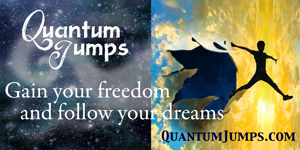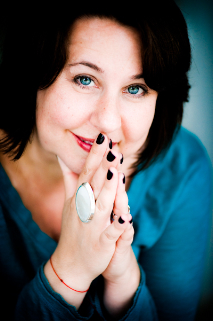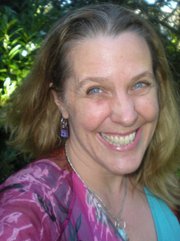Physics Experiment Challenges Objective Reality

I’m fascinated by news this past month of exciting results from a quantum physics experiment that according to the MIT Technology Review appears to provide evidence that two people can observe the exact same event, see two different things happen, and both be correct.
Observers Witness the Same Event Differently
Physicists at Heriot-Watt University in Edinburgh succeeded in bringing a classic Gedankenexperiment (thought experiment) out of the realm of pure conjecture and into the real, physical world of a physics laboratory. The thought experiment requires two people to observe one single photon–which is a quantum, or indivisible, unit of light. Quantum particles can behave as either particles, or as waves, settling into one state or the other (particle or wave) at the precise moment it is observed. All the rest of the time when the particle is not being observed by someone, it exists in a ‘superposition of states’ in which it can be considered to be simultaneously both ‘particle’ and ‘wave.’ When a second person is unaware of the first person’s observational measurement, this thought experiment proposes that the second person who is unaware of the first person’s measurement might be able to to confirm that the photon still exists in a quantum superposition (undecided) state.
Scientists including Caslav Brukner at University of Vienna in Austria and Massimiliano Proietti at Heriot-Watt University in Edinburgh took this experimental concept and created an experimental apparatus involving lasers, beam splitters, and six photons to be measured by various equipment representing the role of the two observers. Preliminary results appear to provide real evidence that within quantum physics, our assumption of shared objective reality may be inaccurate.
 How Nature Operates
How Nature OperatesWelcome to the new Quantum Age, featuring quantum logic! With this new physics experiment supporting the idea that two people can observe the same event, see two different things happen, and both be correct, we are catching glimpses of the way Nature operates. In Nature, we witness such things as: instantaneous species mutation to the most advantageous possible adaptation, and plants routinely performing photosynthesis at more than 90% efficiency. Lactose-intolerant organisms have been observed to adapt to a new lactose-based food source when it was the only one available, by making an evolutionary leap in one generation. All photosynthesizing plants are performing miraculously efficient feats of storing energy from incoming photons, far beyond any human photovoltaic technologies.
When viewing the way so many natural systems seem able to ‘jump to the best reality,’ I can’t help feeling that we’re witnessing nothing less than some kind of deeper, hidden underlying awareness at work–far beyond what materialists might claim to be in charge. Philosophers who share my sense that we are witnessing some kind of optimalism at work include Nicholas Rescher, author of a book on this topic called Axiogenesis. I enjoy taking conscious part in this evolution by consistently asking, “How good can it get?”
The Second Quantum Revolution
I predict that we are now at the dawn of witnessing so-called ‘quantum phenomena’ moving out of the so-called ‘quantum realm’ ever increasingly in view in our everyday macroscopic lives.
When I gave a talk for Marin Institute of Noetic Sciences (IONS) this past month before having seen news of this experiment, I mentioned the famous EPR paper, as well as Wigner’s Friend, Quantum Zeno Effect and EPR steering–but where all of this gains traction and significance is in the context that we are now officially entering the “second quantum revolution” in which macro-scale quantum technology is being created now. This new quantum technological race will feature engineering devices bringing ‘quantum scale’ phenomena into the macroscopic realm for applications in computing, communication, encryption and more. Macroscopic quantum systems have been developed recently in laboratories around the world, and with such fierce competition, we’ll soon be seeing astonishing breakthroughs, such as entangled diamonds.
Mandela Effect, Reality Shifts, and No Objective Reality
Physicists involved with this recent experiment, Massimiliano Proietti and his colleagues, state that, “The scientific method relies on facts, established through repeated measurements and agreed upon universally, independently of who observed them.” Yet we are now glimpsing some of the first clear evidence that such assumptions can be proven false. We are starting to see that the physicist Eugene Wigner’s idea that two scientists might have two different experiences while witnessing the same event appears to be proving to be true.
News of these experimental results is validating for the work I’ve been doing these past 20 years… and very exciting in terms of the implications for how humans can truly address all seemingly ‘impossible’ problems and situations–of every size, shape, and variety! After 20 years of waiting for such an announcement, I’m pleased to see these experimental results that provide validation that we can expect to sometimes witness alternate histories from what others observe. When we recognize that such subjective observation of ‘facts’ is constantly taking place, and that this can help provide a foundation by which we can better understand what is going on with the Mandela Effect and reality shifts, we can gain renewed confidence that humanity can address all seemingly ‘impossible’ problems and situations.
Welcome to the Quantum Age!
I invite you to watch the companion video to this blog post at:
___________________________
 Cynthia Sue Larson is the best-selling author of six books, including Quantum Jumps. Cynthia has a degree in Physics from UC Berkeley, and discusses consciousness and quantum physics on numerous shows including the History Channel, Gaia TV, Coast to Coast AM, the BBC and One World with Deepak Chopra and on the Living the Quantum Dream show she hosts. You can subscribe to Cynthia’s free monthly ezine at: http://www.RealityShifters.com
Cynthia Sue Larson is the best-selling author of six books, including Quantum Jumps. Cynthia has a degree in Physics from UC Berkeley, and discusses consciousness and quantum physics on numerous shows including the History Channel, Gaia TV, Coast to Coast AM, the BBC and One World with Deepak Chopra and on the Living the Quantum Dream show she hosts. You can subscribe to Cynthia’s free monthly ezine at: http://www.RealityShifters.com






Recent Comments